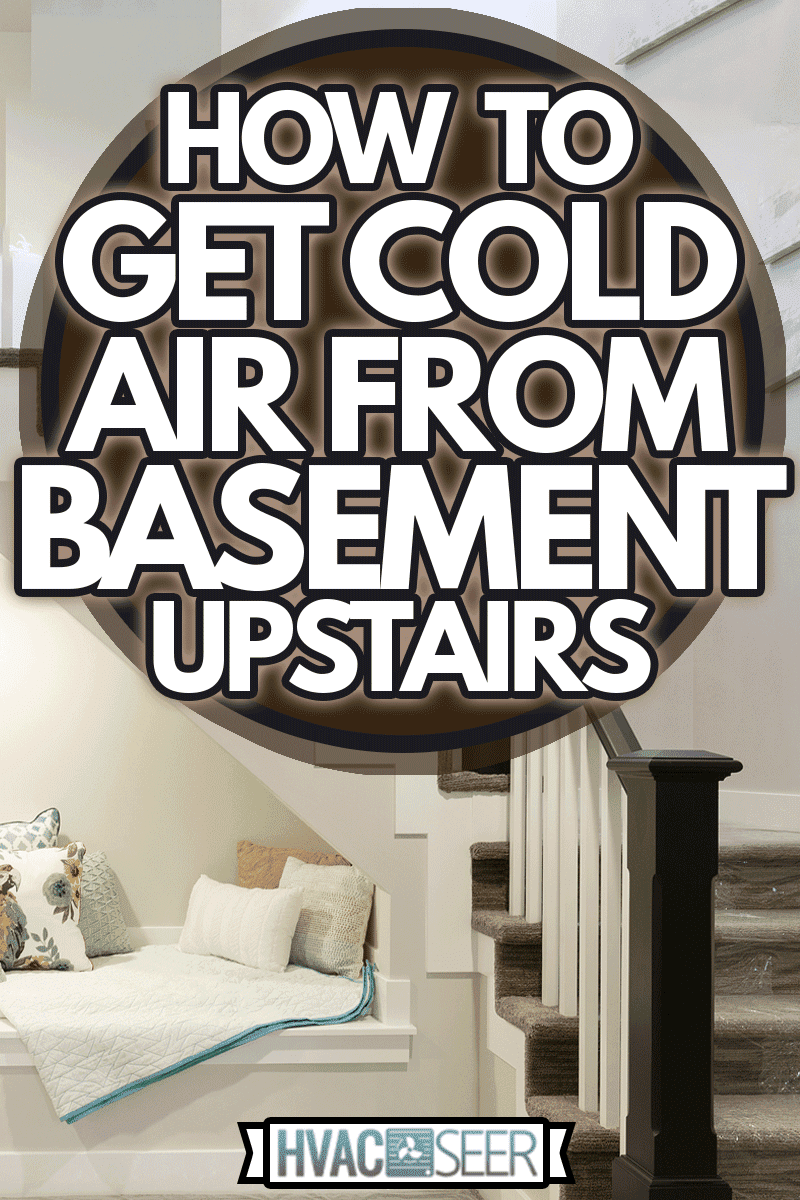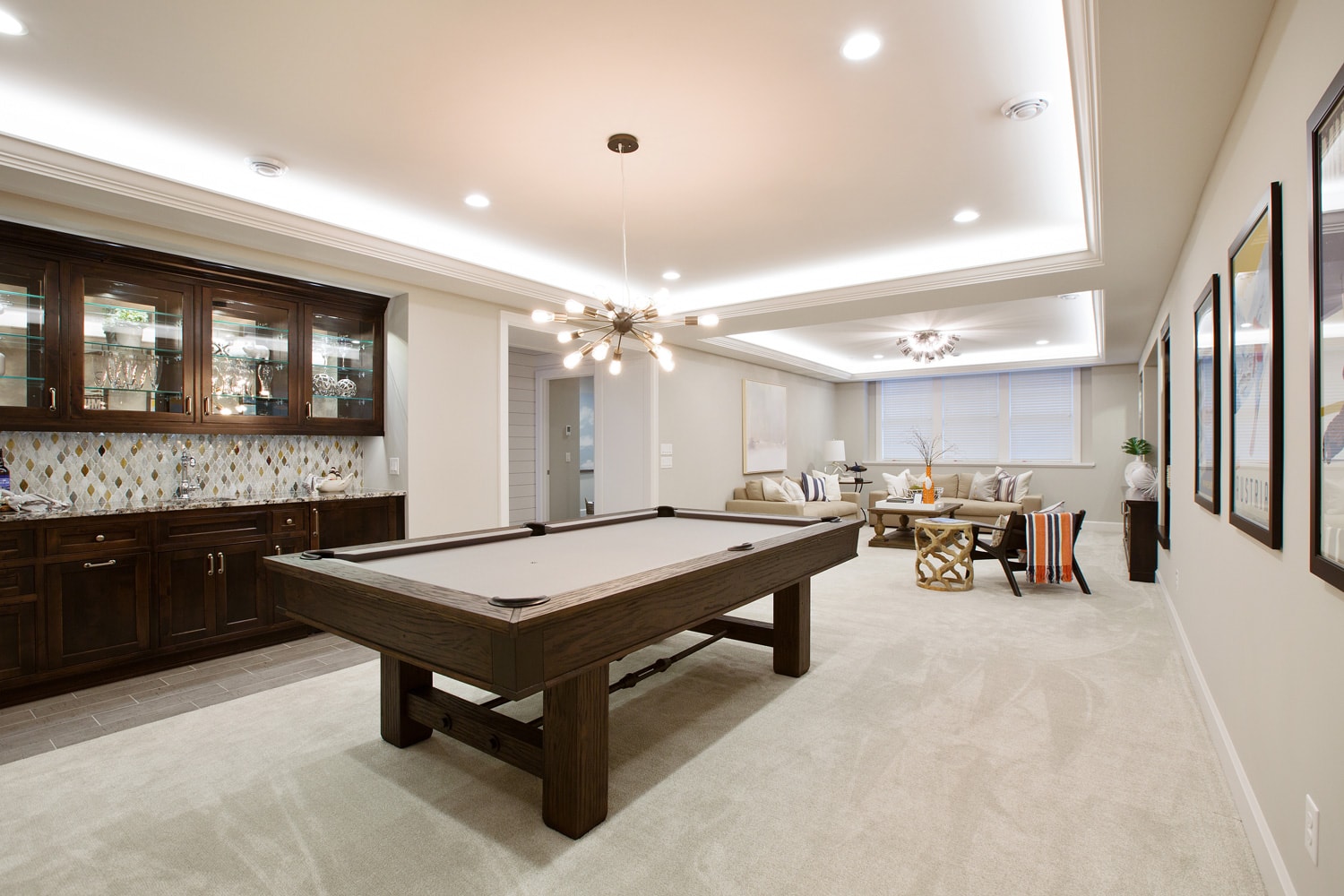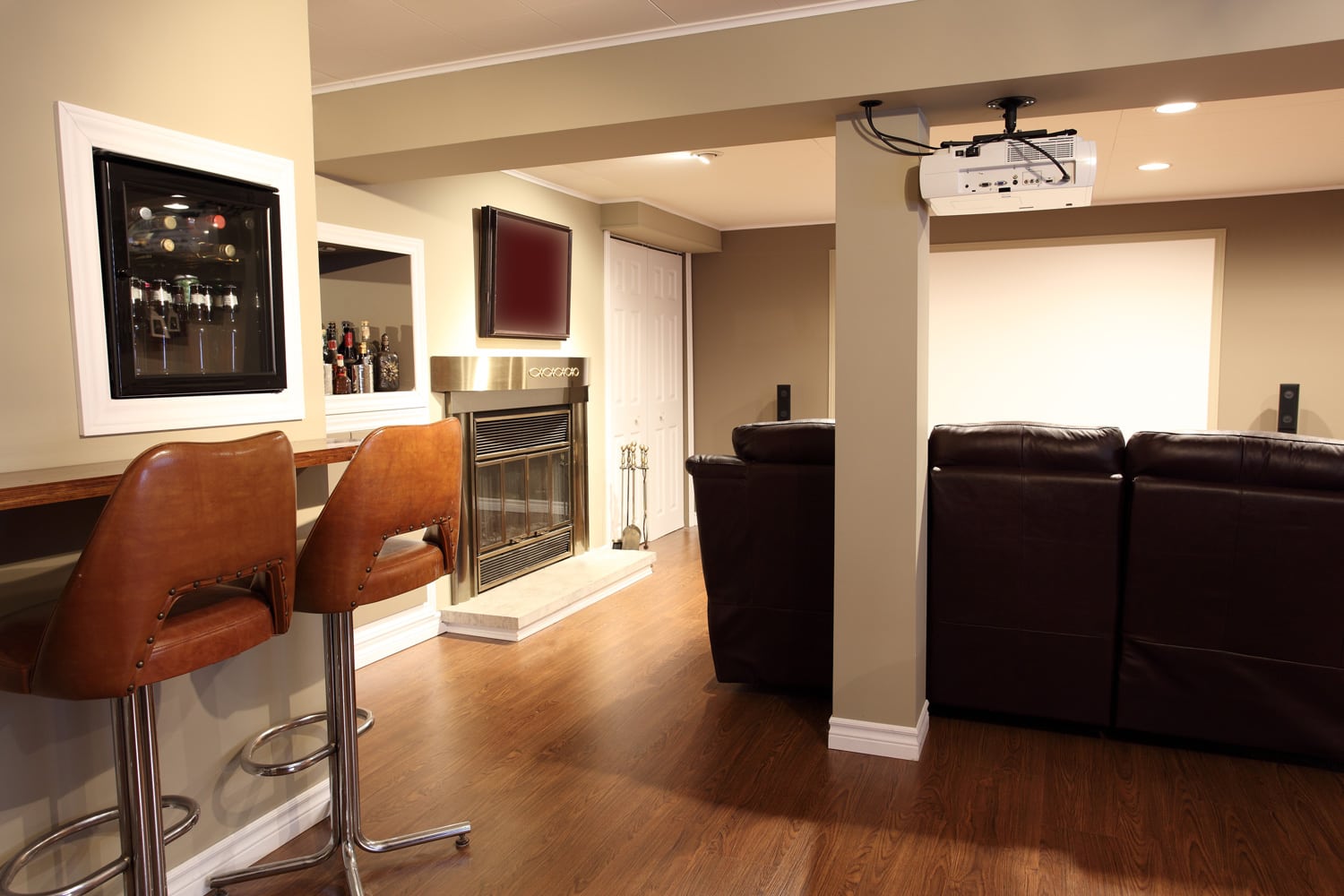The basement is often the coldest room in the house, especially during summer. You can ease the workload on your HVAC system by using the cold basement air to cool your home.
But how can you get the cold air from the basement upstairs? We've consulted the technical experts, and this is what they have to say.
Apply any of these methods to get cold air from the basement upstairs:
- Enhance natural air circulation from the basement to the rooms upstairs by strategically opening and closing windows and other entryways.
- Use fans to create mechanical circulation.
- Fix a return air vent in the basement.
- Turn on the summer switch fan on your furnace.
Keep reading as we discuss in-depth how you can apply these methods to cool the rooms upstairs with the cold basement air. We will also discuss whether closing the basement vents will aid in cooling the rooms upstairs.
Further, we will explore what you can do if your house is hot upstairs and cold downstairs. Without further ado, let's get into it.

Getting cold air from the basement upstairs
Basements are typically the coolest rooms in the house. This temperature difference can be attributed to their underground location and air movement such that while warm air rises, cold air goes down.
You can benefit from the temperature variation by using the cold basement air to cool the rooms upstairs. This section will explore how you can get cold air from the basement upstairs.
Enhance natural air circulation
Allow natural air circulation from the basement to other rooms in the house. You can do this by closing all of your home's windows and doors opening to the outside.
However, you should leave one or two windows in the basement and one or two windows on the top-most floor in your home open.
Choose strategically positioned windows to provide the required air pressure to enable airflow from the basement upstairs. As the windows upstairs let out the hot air, cold air from the basement rises, cooling the rest of your house.
It would be best to leave the basement door open to create a path through which the cold air can get into the house.
You can hasten and improve the efficiency of this method by using a box fan. Position the fan such that it faces the outside to aid it in drawing hot air from the home.
This method may not be reliable, though, on a sweltering day since closing all the doors and windows would keep out the cold breezes that would otherwise cool your house faster.
Create a clear path for air to flow by removing any obstacles that may hinder airflow. Additionally, ensure that there are no barriers outside the basement window to achieve the best air circulation.
This fan has high-performance blades that allow for smooth operation and has a safety grill for protection while in use. See it on Amazon.
Use fans
You can use fans to create mechanical air circulation instead of relying on natural airflow. The efficiency of this method will depend on the type of fans installed and how you use them.
Combining a basement window fan and a high-velocity box fan is recommended to aid air movement from the basement upwards.
Install a window fan on any of the basement windows. Ensure that the size of the fan is proportionate to the window size. The fan should be designed to draw air from outside instead of pushing indoor air outdoors.
Moreover, it would be preferable to close all the other basement windows, leaving only the window with the fan open.
A large diameter high-velocity box fan will minimize noise and circulate more air. Place the box fan on the last step of the basement stairs and switch on both fans simultaneously to facilitate cold air movement upstairs.
You can also integrate this method with the open windows technique for better results.
This window fan is uniquely designed to operate for intake or exhaust purposes simultaneously. Check it out on Amazon.
Fix a return air vent in the basement

Fixing a return air vent in the basement is a rather complicated method to force cold air upstairs compared to using fans or allowing natural circulation.
The return air vent should be located near the basement floor to efficiently revert cold basement air to the rest of the house. The vent should also be situated as close to the furnace as possible.
Flipping the summer switch on will activate the fan on the thermostat system if the return air vent is positioned correctly.
The return air vent's location will aid in pulling the basement's cold air into the system, from where it is distributed to the rest of the house.
It is prudent to hire a technical expert to install the vent to avoid damaging the system, especially if you do not understand how it works.
Although installing a return air vent will keep your house cool, you will notice that the basement will become warmer since the warm air from the other rooms settles in the basement. Switching off the entire system for some time will allow the basement to cool.
Turn on the summer switch fan on your furnace
You can only use this method to move cold air upstairs if the central HVAC system in your home uses a furnace. Begin by removing the side panel from the furnace. Next, disconnect the oil or gas supply to the furnace to extinguish the pilot light and cut off the warm air supply from the system.
Leaving the side panel off will increase the quantity of cool air moved by the system.
Locate the summer switch on the control panel or the furnace and flip it on to prompt the system to turn on the fan. If the side panel of the furnace is off, the system will draw cold air from the basement and circulate it throughout the house.
This method requires that you close the windows and leave the trap door of your attic open to facilitate the efficient movement of cold air from the basement upstairs.
Will closing the basement vents help cool the rooms upstairs?

Sealing basement vents during summer minimizes airflow in the basement, easing temperature control. Although closing these vents saves energy, it does not contribute to redistributing cold air from the basement to other rooms in the home.
Closing too many basement vents can also create problems you initially did not anticipate. When there are fewer places for air to go, pressure can build up inside the air ducts causing the ducts to start leaking.
The leaks can result in higher electric bills. Additionally, you may notice uneven heating and cooling in your home resulting from the damaged ductwork.
What to do when your house is hot upstairs and cold downstairs

These measures will help you to keep your home cool in addition to circulating the cold air from the basement upstairs:
Block the sun's rays
Use blinds and shades to block excessive light and UV rays. You can also invest in black-out curtains or upgrade your windows to energy-efficient double-pane windows to protect your home from the harsh summer sun.
Minimize the use of lights and appliances
Appliances like televisions, heaters, dryers, ovens, and dishwashers contribute to heat, which raises the internal temperature in the home.
Reducing the use of devices that increase internal heat makes it easier to maintain comfortable temperatures in your home.
Adjust the thermostat fan settings
Switching the thermostat fan settings from Auto to On keeps the blower fan constantly running, creating a more even mix of air throughout the home.
Install floor and ceiling fans
Fans are a critical component in propelling the air inside your house. Setting the fans to rotate counterclockwise will push the air straight downwards, creating a cooling effect. Setting the fan to high speed will increase air circulation.
Install insulation and ventilation
Insulation bars the hot outdoor air from entering the home, thus making it easy to maintain comfortable temperatures. On the other hand, ventilation facilitates the ejection of hot and stale indoor air and allows cool and fresh air into the house.
An efficient ventilation system will result in reduced temperatures.
Final Thoughts

Using the cold basement air to cool your home will reduce your energy consumption resulting in lower energy bills. Moreover, it eliminates the need to invest in an expensive cooling system for your home. Since this usage enhances air circulation, pollutants are continually eliminated as fresh air flows upstairs.
You can boost the efficiency of cooling your home with the cold basement air by putting measures that reduce internal heat and promote air circulation.
Actions such as running fans and reducing the use of appliances that produce heat minimize the burden on your HVAC system, improving its functional life.
Before you go, read these articles to learn how to maintain comfortable temperatures in your basement:


